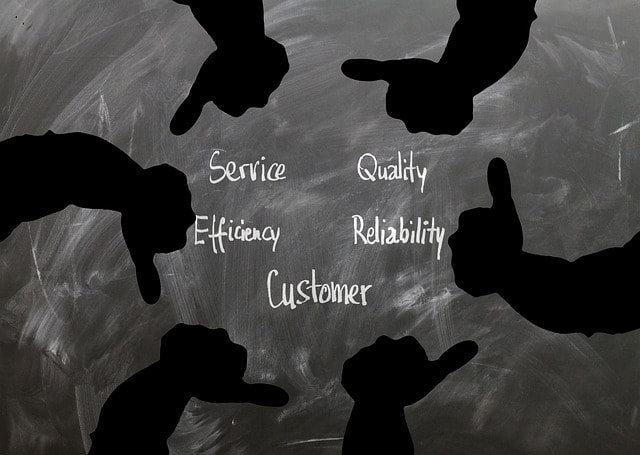
.jpg)
Mastering Difficult Client Conversations
Published on December 28, 2024
By Marianella Saavedra Terkes · 9 minute read
In the fast-paced world of NoCode development, mastering challenging client communications and conversations is just as crucial as possessing technical expertise. Imagine navigating a project where every word could either build a bridge or create a barrier. As a Project Manager at Kreante, I’ve discovered that the key to successful project outcomes often lies in how well we handle complex discussions and manage expectations. This guide will unveil the secrets to turning difficult conversations into opportunities for growth and collaboration, keeping you engaged and eager to learn more about transforming challenges into achievements.

The Art of Active Listening and Receiving Messages
Effective project management begins with listening. Understanding the behavior of all parties involved is crucial in this process. Using tools like Fireflies for meeting recordings ensures we capture every detail of client conversations. This approach helps us:
Document all requirements accurately
Review discussions for clarity
Track project evolution
Maintain clear communication records
Active listening is a vital skill in project management, as it enables project managers to fully understand the client's needs and expectations. By paying attention to verbal and non-verbal cues, such as tone of voice and body language, project managers can gain more profound insights into the client's perspective. This attentiveness helps in accurately capturing requirements and in identifying potential areas of concern that may need addressing.
Additionally, the process of reviewing discussions for clarity is essential in ensuring that all parties have a shared understanding of the project's objectives and deliverables. By revisiting recorded meetings and discussions, project managers can confirm that all stakeholders are aligned and that any ambiguities are resolved promptly. This practice minimizes the risk of miscommunication and ensures that the project stays on track.
Tracking project evolution is another critical aspect of effective project management. By maintaining detailed records of all communications and decisions, project managers can monitor the project's progress and make informed adjustments as needed. This systematic approach allows for timely identification of any deviations from the project plan, enabling proactive measures to keep the project aligned with its goals.
Maintaining clear communication records fosters transparency and accountability among all stakeholders. By having a comprehensive documentation system in place, project managers can provide evidence of discussions and agreements, which can be invaluable in resolving disputes or addressing any discrepancies that may arise during the project lifecycle.
In conclusion, the art of active listening and effective communication in project management is not just about hearing words; it's about understanding the underlying messages and emotions conveyed by clients and team members. By honing these skills and utilizing advanced tools, project managers can create a collaborative environment that drives project success and strengthens client relationships.
Managing Scope and Expectations
One of the most challenging aspects of NoCode projects is the process of scope management. When clients request features beyond the initial scope, it’s crucial to handle these conversations constructively. Instead of simply saying “no,” we focus on:
Understanding the underlying need: By delving into the client's request, we can identify the core requirements that drive their desire for additional features. This involves engaging in open dialogue to uncover the true purpose behind their request, which can often lead to innovative solutions that align with the project's goals.
Validating the client’s business objectives: It's essential to ensure that any new requests are in line with the client's overall business strategy. By discussing their objectives, project managers can confirm that the proposed features support the client's long-term vision and provide tangible value to their organization.
Proposing alternative solutions within scope: Rather than dismissing new ideas, we strive to offer creative alternatives that fit within the current project parameters. This might involve suggesting modifications to existing features or leveraging available technology to achieve similar outcomes without expanding the scope.
Creating a roadmap for future enhancements: Acknowledging the client's aspirations for future growth is crucial. By developing a strategic plan for potential enhancements, project managers can assure clients that their ideas are valued and will be considered in subsequent phases. This approach maintains project focus and strengthens client relationships by demonstrating a commitment to their evolving needs.

The MVP Approach in Development
When dealing with ambitious client expectations, I've found success in promoting a Minimum Viable Product (MVP) approach. This means:
First establishing core functionality planning for iterative improvements focusing on immediate value delivery setting clear paths for future enhancements
The MVP approach is crucial in the fast-paced world of NoCode development, where timelines are tight and resources may be limited. By concentrating on delivering the essential features first, project managers can ensure that the product meets the client's immediate needs while allowing room for future enhancements. This method not only satisfies the client's current business objectives but also lays the groundwork for scaling the project as new requirements emerge. Furthermore, the MVP approach encourages ongoing feedback and collaboration between the project team and the client, fostering a stronger partnership and ensuring that the final product aligns closely with the client's vision.
In practice, the MVP strategy involves clear communication and setting realistic expectations with clients. By emphasizing the importance of starting with a robust foundation, project managers can guide clients through the development process, highlighting the benefits of gradual and thoughtful expansion. This approach mitigates risks associated with overextending resources and ensures that each iteration adds meaningful value to the project, ultimately leading to a more successful and sustainable outcome.
Time Management and Deadlines
Maintaining project timelines often necessitates having firm conversations about feature requests. It's essential to approach these discussions with a strategic mindset. The key elements include:
Communicate timeline impacts early: Proactively discuss how additional requests might affect the current project schedule. This transparency helps set realistic expectations and avoids last-minute surprises.
Present alternative solutions: Offer feasible alternatives that align with the project's current scope and timeline. This demonstrates flexibility and a commitment to meeting the client's needs without compromising the project's integrity.
Maintain focus on project priorities: Reiterate the primary objectives of the project to ensure that all parties remain aligned on what truly matters. This focus helps prevent scope creep and keeps the team concentrated on delivering the core functionalities.
Ensure transparency about tradeoffs: Clearly explain any tradeoffs involved in accommodating new requests, such as potential delays or resource reallocation. This openness fosters trust and allows for informed decision-making by the client.
Preparation: The Key to Productive Meetings
Successful client meetings require thorough preparation in every form of communication, whether verbal or written. My approach includes:
Reviewing previous meeting notes
Preparing specific questions
Identifying potential blockers
Creating clear meeting agendas
Preparation involves organizing materials and understanding the client's business objectives and current project status. By doing so, project managers can anticipate potential issues and address them proactively during meetings. Additionally, setting up a structured agenda helps keep the meeting focused and ensures all necessary topics are covered within the allotted time. It's also beneficial to allocate time for open discussion, allowing clients to express their thoughts and concerns, which can lead to valuable insights and stronger collaboration. Utilizing technology like project management software and communication tools can facilitate seamless interactions and record-keeping, ensuring that all stakeholders are aligned and informed. This comprehensive approach to meeting preparation ultimately leads to more productive outcomes and strengthens the client-manager relationship.
Receiving and Responding to Messages
Effective communication hinges on how well we receive and respond to messages. When receiving a message, it’s crucial to pay attention to the sender’s intent, tone, and language to ensure accurate interpretation. This involves active listening, maintaining eye contact, and asking clarifying questions to avoid misunderstandings.
When responding to a message, consider the following:
Acknowledge receipt: Confirm that you have received the message to show that you value the sender’s time and effort.
Understand the context: Consider the situation, purpose, and audience to provide a relevant and effective response.
Be clear and concise: Use simple language and focus on the main points to ensure your message is easily understood.
Use a professional tone: Maintain a respectful and professional tone, even in difficult or sensitive situations.
Proofread and edit: Review your response for grammar, spelling, and punctuation errors to ensure it is polished and error-free.
By following these guidelines, you can develop effective message-receiving and responding skills, which are essential for building strong relationships, resolving conflicts, and achieving business success.
Leveraging Technology for Better Communication
In today's digital age, advanced project management software and AI-powered tools have revolutionized the way we communicate and collaborate. Programs like Notion, Trello, Asana, and Monday.com offer intuitive interfaces for task management and timeline tracking, ensuring everyone stays on the same page. AI assistants, such as ChatGPT, Claude.ai, and Google's AI tools, enhance productivity by generating concise meeting summaries and managing follow-ups efficiently. Communication platforms like Slack facilitate seamless interaction, allowing for real-time updates and discussions. These technologies form a comprehensive system for managing project communications, enabling project managers to focus on strategic decision-making and fostering strong client relationships. By leveraging these cutting-edge tools, project managers can ensure that all stakeholders are aligned, reducing the risk of miscommunication and enhancing the overall success of the project.
Building Trust Through Transparency
Long-term client relationships are built on trust, which serves as the cornerstone of successful project management. Establishing trust involves a profound understanding of group dynamics and the commitment to transparent communication within the team. This process requires project managers to be candid about their limitations, ensuring that clients are aware of any constraints that might impact the project. Regular updates are crucial, as they keep clients informed about the project's progress and any potential changes. Sharing both challenges and solutions openly fosters a culture of honesty and collaboration, allowing clients to feel involved and valued in the decision-making process. Maintaining an open dialogue strengthens client relationships and encourages a partnership where both parties work towards shared goals. By prioritizing transparency and communication, project managers can build a solid foundation of trust that supports long-term client engagement and project success.

Managing Conflict and Difficult Emotions
Managing conflict and difficult emotions is a critical aspect of effective communication. Conflicts can arise from misunderstandings, differences in opinion, or unmet expectations. To manage conflicts and difficult emotions, consider the following strategies:
Stay calm and composed: Maintain a calm demeanor, even in challenging situations, to think clearly and respond effectively.
Active listening: Listen attentively to the other person’s perspective, ask questions, and clarify their concerns to understand their needs and feelings.
Empathize: Show understanding and empathy towards the other person’s emotions and concerns to build trust and rapport.
Focus on the issue: Separate the problem from the person and focus on finding a solution that meets everyone’s needs.
Seek common ground: Look for areas of agreement and try to find a mutually beneficial solution.
By using these strategies, you can effectively manage conflicts and difficult emotions, which is essential for building strong relationships, achieving business success, and maintaining a positive work environment.
Developing a Client-Centric Approach
Developing a client-centric approach is essential for building strong relationships with clients and delivering exceptional customer service. A client-centric approach involves understanding the client’s needs, preferences, and expectations and tailoring your communication and services to meet those needs.
To develop a client-centric approach, consider the following:
Conduct client research: Gather information about your clients’ needs, preferences, and expectations to understand their perspective.
Use client feedback: Encourage client feedback and use it to improve your services and communication.
Personalize your communication: Tailor your communication to each client’s needs and preferences to build trust and rapport.
Be responsive: Respond promptly to client inquiries and concerns to show that you value their time and business.
Continuously improve: Continuously evaluate and improve your services and communication to meet the evolving needs of your clients.
By developing a client-centric approach, you can build strong relationships with your clients, deliver exceptional customer service, and achieve business success.

The Power of Solution-Focused Communication
When challenges arise, the focus should always be on solutions. When challenges arise, presenting examples of successful solutions can help in addressing concerns. This involves:
Acknowledge concerns to show understanding.
Present viable alternatives to address issues.
Clearly explain tradeoffs involved in solutions.
Create actionable plans to implement solutions.
In addition to these steps, it is crucial to involve the client in the solution-finding process. By engaging them in brainstorming sessions and encouraging their input, project managers can foster a collaborative environment that generates innovative ideas and solutions. This collaborative approach not only empowers clients but also strengthens the partnership by making them feel valued and heard.
Documenting these solutions and the decision-making process ensures transparency and accountability. This documentation can serve as a valuable reference for future projects, helping to streamline problem-solving and avoid similar issues. By maintaining a repository of successful solutions, project managers can quickly access proven strategies, saving time and resources.
Another essential aspect of solution-focused communication is the ability to adapt and be flexible. As projects evolve, new challenges may arise, requiring adjustments to the initial action plans. By remaining open to change and continuously evaluating the effectiveness of implemented solutions, project managers can ensure that the project remains on track and aligned with the client's goals.
Ultimately, the power of solution-focused communication lies in its ability to transform challenges into opportunities for growth and improvement. By focusing on solutions, project managers can navigate complex situations with confidence, leading to successful project outcomes and strengthened client relationships.
Setting Boundaries While Maintaining Relationships
Effective project management necessitates the establishment of clear boundaries, a process that is developed through strategic communication. Success in this domain hinges on a multifaceted approach. Firstly, establishing clear scope parameters is crucial to ensure that all parties have a shared understanding of the project's limits and objectives. This clarity helps prevent scope creep and aligns the team's efforts with the client's expectations. Secondly, communicating deadline implications is vital for managing client expectations and ensuring timely project delivery. By being transparent about the impact of changes on timelines, project managers can foster trust and collaboration. Additionally, managing feature requests strategically involves evaluating each request's feasibility and alignment with the project's goals. This requires a delicate balance between accommodating client desires and maintaining project integrity. Lastly, maintaining professional relationships is essential for long-term success. By fostering open dialogue and demonstrating a commitment to the client's needs, project managers can build strong partnerships that withstand challenges and drive project success. Together, these elements form the foundation of effective project management, enabling teams to navigate complex projects with confidence and precision.

Overcoming Common Challenges
Common challenges include language barriers, cultural differences, and technological issues.
To overcome these challenges, consider the following strategies:
Use simple language: Avoid using technical terms that may be unfamiliar to your audience.
Be culturally sensitive: Be aware of cultural differences and adapt your communication to meet the needs of your audience.
Use technology effectively: Use technology to facilitate communication, such as video conferencing or instant messaging, but also be aware of its limitations and potential issues.
Be flexible: Be prepared to adapt your communication style to meet the needs of your audience and overcome unexpected challenges.
Seek support: Seek support from colleagues, mentors, or professionals if you need help overcoming a particular challenge.
Looking Forward: Continuous Improvement
Every challenging conversation is an opportunity for growth. We consistently focus on:
Reviewing communication strategies
Refining our approach
Documenting lessons learned
Enhancing client relationship management
For NoCode development projects to thrive, mastering difficult conversations is crucial. At Kreante, we've discovered that combining clear communication, active listening, and solution-focused discussions forms the bedrock of successful project outcomes.
Additionally, fostering a culture of continuous improvement is imperative. This involves:
Regularly soliciting feedback from clients and team members to identify areas for enhancement
Encouraging open communication and creating a safe environment for sharing insights
Investing in ongoing professional development for project managers and team members, ensuring they are equipped with the latest skills and knowledge
Leveraging technology plays a significant role in continuous improvement. By:
Implementing advanced project management tools and analytics
Providing data-driven insights into project performance
Identifying trends and areas for optimization
By embracing the power of technology, project managers can make informed decisions that boost productivity and project outcomes.
The path to continuous improvement requires dedication and a proactive mindset. By embracing change and striving for excellence, project managers can overcome challenges and pave the way for long-term success and growth in the dynamic field of NoCode development.
Explore More on Our Blog
If you're keen to dive deeper into the realm of NoCode development and uncover various topics related to project management, I encourage you to check out our blog. It's a treasure trove of articles, insights, and tips designed to enhance your skills and knowledge. Whether you're a seasoned professional or just embarking on your journey, our blog serves as your ultimate resource for staying informed and inspired. Don't miss the chance to broaden your perspectives, discover more today!

Accelerating Software Development with Vibe Coding and AI Tools at Kreante

Kreante: Accelerating Your AppDevelopment with Low-Code, AI, and “Vibecoding”




.png)


.svg)
